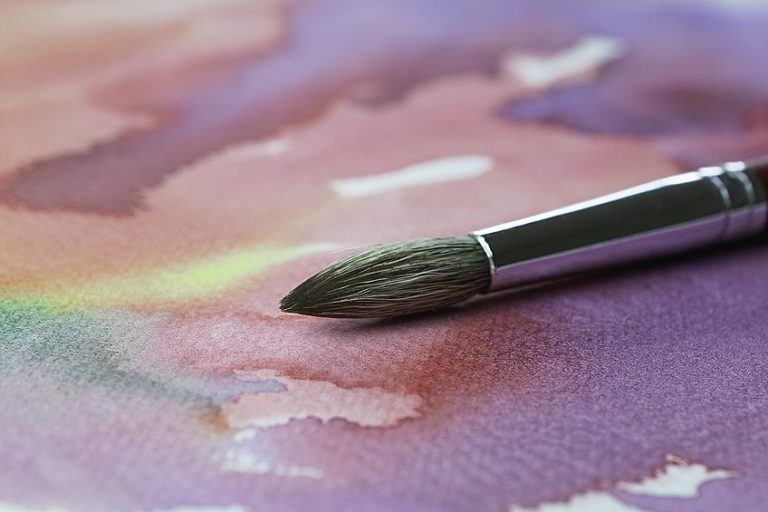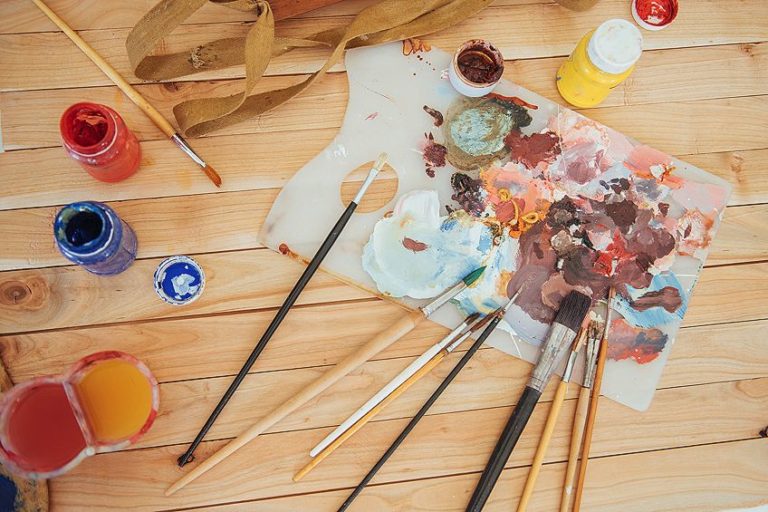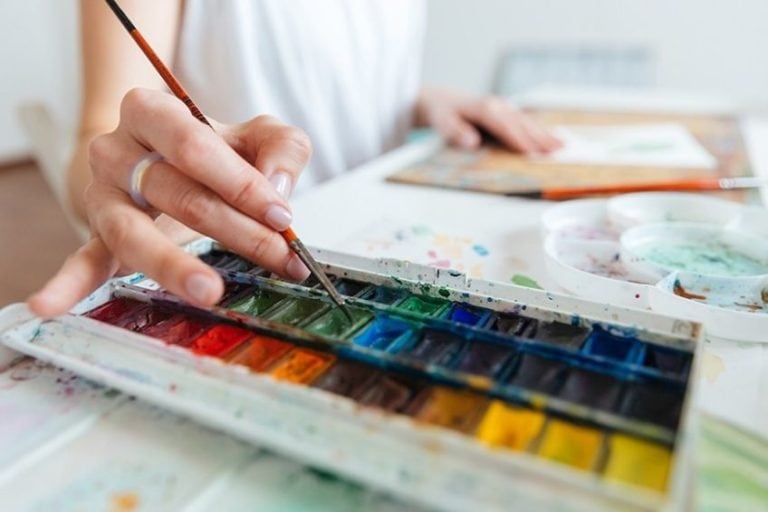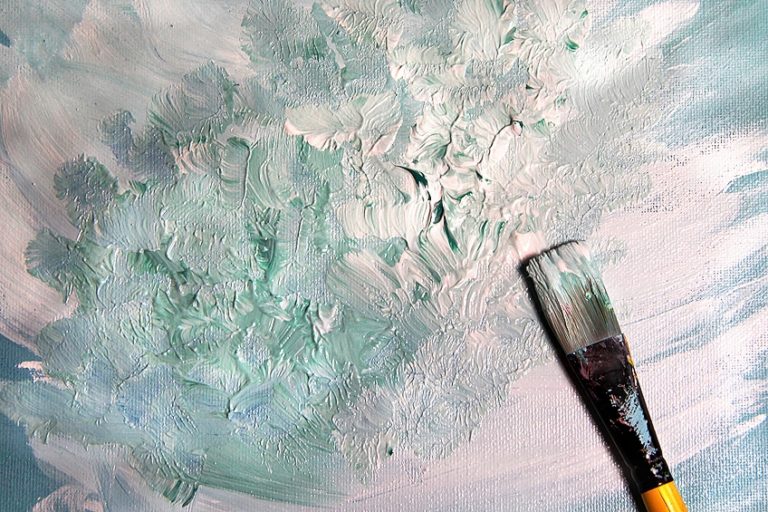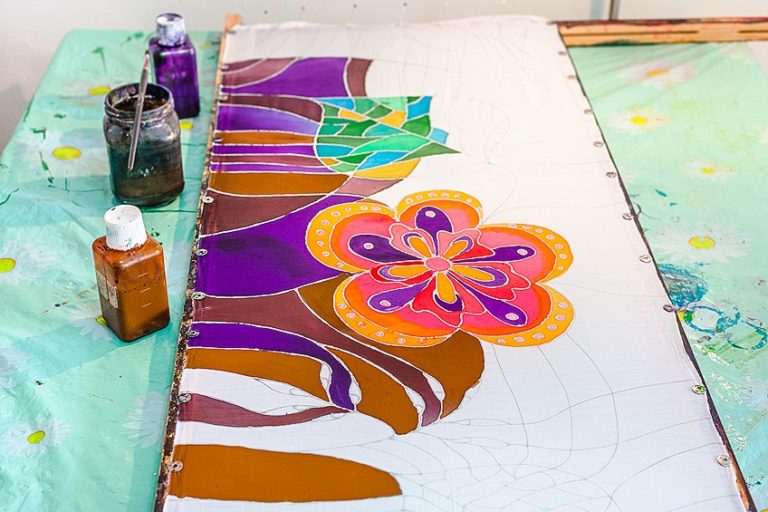What Is Acrylic Paint? – Types of Acrylic Paint and How to Use Them
This post may contain affiliate links. We may earn a small commission from purchases made through them, at no additional cost to you.
Acrylic paint has been one of the most known paints within the art industry and so many other industries as well. Whether you are a home decor specialist you love to give a room a new lick of paint, or a fine artist who displays their art in famous galleries, or simply a hobbyist who is starting a new venture within the world of painting, acrylic paint will be on your mind. Even though it is so widely used there is very little that is known amongst us so-called know-it-alls about the medium. This tutorial will discuss in detail, what is acrylic paint. We will include what acrylic paint is used for, in all the various forms. We will also include how to make acrylic paint, from acrylic paint ingredients to acrylic binders. If you are thinking about becoming one of the avid acrylic paint users, then keep reading and you will learn everything you will need to know.
Acrylic Paint Explained
What is acrylic paint, you might ask? With acrylic paints, you can create a variety of textures and consistencies by manipulating the colors. In acrylic paints, pigments are distributed throughout a polymer suspension made up of water and acrylic polymer. Even though acrylic paint has so many uses, there are only three components that make the substance that are water, the color pigment, as well as the acrylic binder.

Acrylic Pigments
Whenever you are appreciating a color of paint, you are appreciating the pigment that has been added to make the color. Pigments can be synthetically made or naturally derived from nature, but typically acrylic paint has synthetic pigments and oil paints have natural ones.
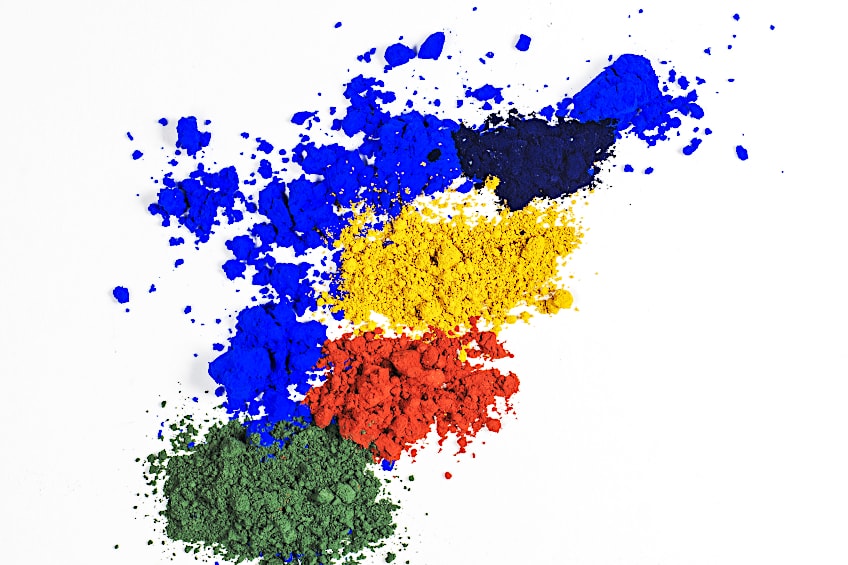
Acrylic Binder
Because pigments cannot adhere to a surface by themselves, you have to use something to ensure that the paint stays on the surface. The binder is what holds the paint together, and helps it stick to the surface you are painting. The acrylic polymer and binder make a thick and hard coat of color over the surface you have painted once the water in the paint has evaporated.
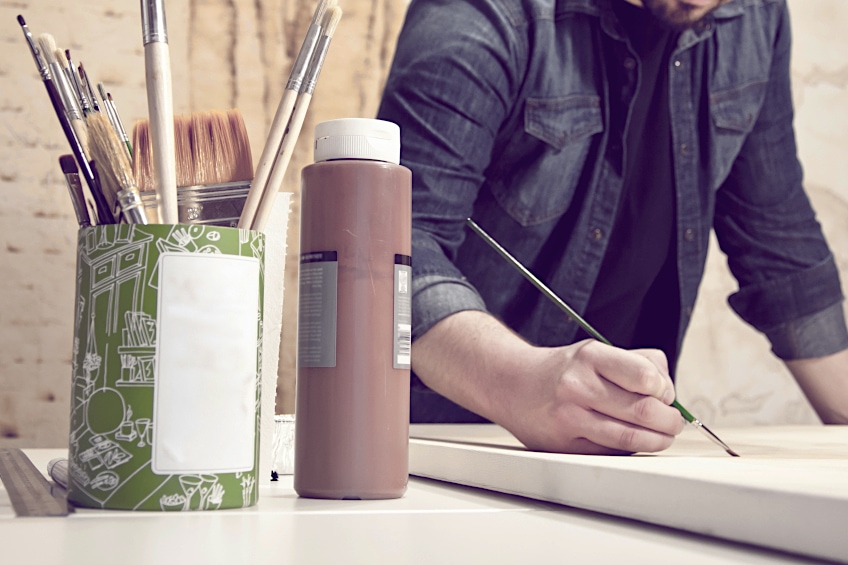
Water
Acrylic paints, as stated above, are based on water, and the water functions as a vehicle through which all the other components of acrylic paints are transported. Which can be referred to as a polymer emulsion or suspension. A polymer film with color pigments is left behind after the paint has been applied to a surface from evaporation or absorption of the water in it.
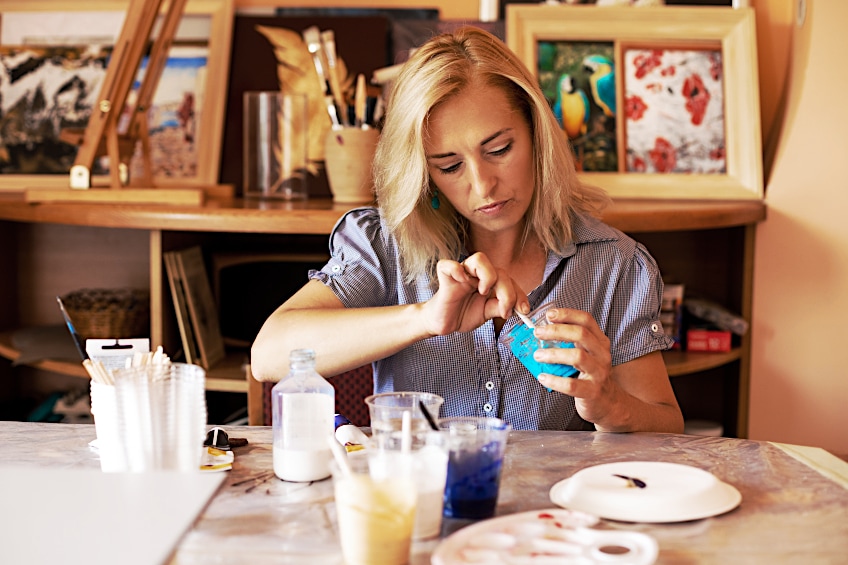
The Ingredients in Acrylic Paint
Before we can discuss what acrylic paint is used for, we must first understand how to make acrylic paint, and for that, we will need to know the rest of the acrylic ingredients. Here are the basic ingredients that go into making acrylic paints, but there is a lot more that goes into it than this. To achieve a more consistent mixture, a dispersant is included in addition to the pigment, to prevent it from floating on top of the water. Here are some of the other components that they add into the mix for more benefits.
- To keep a decent PH level as well as assisting with the stabilizing of the paint, buffers can be added. This will also increase longevity and durability.
- The process in which the paint dies is assisted with defoamers and surfactants.
- Thickening agents to make the consistency of the paint more viscous
- Polymerization is what we call the process where that thick coating is formed after the water has evaporated. This is helped by initiators.
- To help the paint’s shelf life last longer, preservatives are added.
Other mediums can be added to the acrylic paint after the basic version has been made. In addition to being able to enhance the painting, these mediums also provide additional properties like making it thicker. Add fluid mediums or flow enhancers to the paint to change its body. These fluid mediums or flow enhancers are available in gels and pastes that you can add to the paint to modify its appearance.
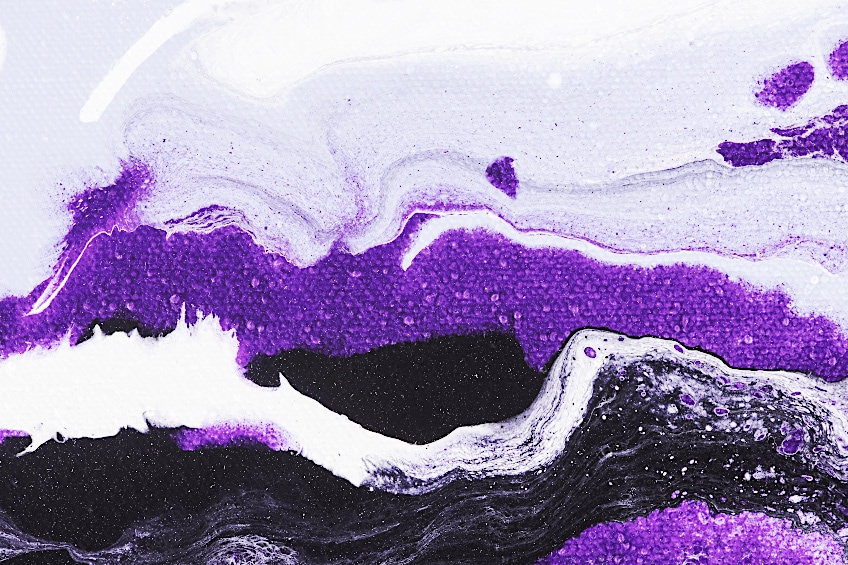
Acrylic paint can be thinned by adding a splash of water, but too much water will cause the paint to become weak. You can thin acrylic paint with a fluid enhancer or medium since it won’t affect the outcome and the paint will remain stable after drying. You can also add other components, such as pastes for a more opaque aesthetic, and gels for a more transparent aesthetic. The use of a gel medium in your acrylic paint can help you extend the time the paint stays on your canvas without having to thin it as well as speeding up the drying time. The problem with acrylic paint is that it dries quickly, so you might want to add a retarder, which should help to extend your working period.

There are two distinct types of acrylic paint: namely traditional and modern acrylic paints, even though they have only begun to feature in relatively recently. In contrast to traditional acrylic paints, modern acrylic paints have a slightly slower frying time and can be reactivated after drying.
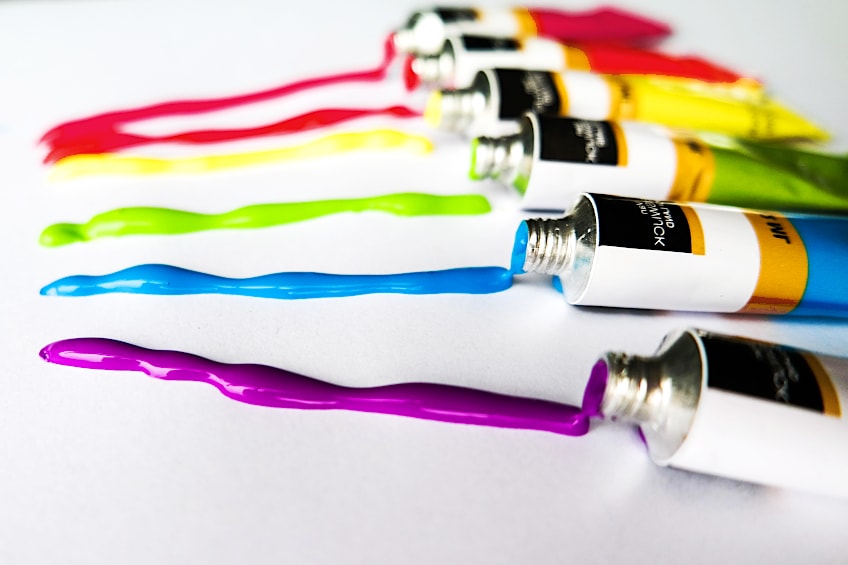
Advantages and Disadvantages of Acrylic Paint
Why Are Acrylic Paints So Popular? What is acrylic paint used for? In recent times, acrylic paint has made the top of the list of popular art mediums. For a long time, paints were mixed by hand and the ingredients in oil paints were often toxic which caused health concerns. There are a great many acrylic paints that are non-toxic and can be used straight from the bottle, but you can also modify them if you’d like. Not only that, but acrylic paints are also extremely versatile, they can be used on a wide variety of different surface materials including, fabrics, wood, canvas, cement, glass, paper, plastic, and even brick!
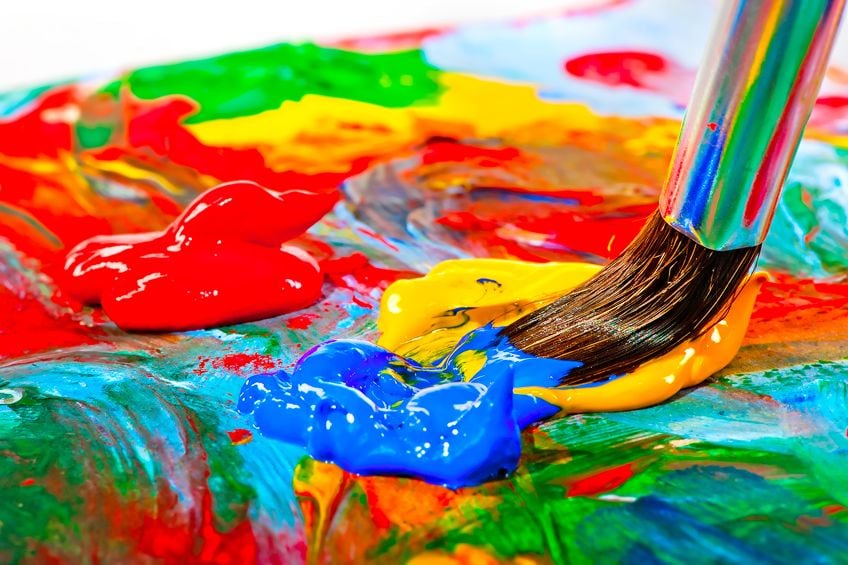
Acrylic paint users all have certain aspects of acrylic that they have found to be advantageous (or not) based on their personal experiences of using acrylics. For your benefit, we have listed a few of the main advantages and disadvantages of the medium, so that you are not floundering in a world of opposing opinions.
- An amazing benefit is the general lack of toxicity in most of the acrylic paint brands out there. They are also low odor
- There is a variety of bright highly pigmented colors to choose from
- Suitable to paint many different kinds of surface materials, so you are not limited there
- The application of this paint is good for beginners because it is simple and easy to learn
- You can control the opacity and the consistency by adding more water or a thickening agent to add diversity to your painting
- You can add layers upon layers of acrylic paint
- When it has dried, the acrylic paint is flexible and it will be resistant to liquids
- You can paint acrylic paint using a variety of tools, like a sponge, paintbrush, roller, and more
- Once acrylic paints dry, there is no going back and changing anything you have appointed unless you paint over it.
- It will ruin brushes and rollers if you forget to wash a paintbrush after you use the paint.
- The color will darken when it dries
- Some brands add a certain amount of toxins to the paint
- You have to work faster than if you were painting with oil paint
Acrylic Paint Types
You can use different types of acrylic paints to achieve the results you would like with your art or craft, depending on the results you wish to achieve. There are various formulas for viscosity, sometimes called “body” or “body of the paint”, and your choice is determined by the type of surface on which you will apply the paint and the technique you will be employing.
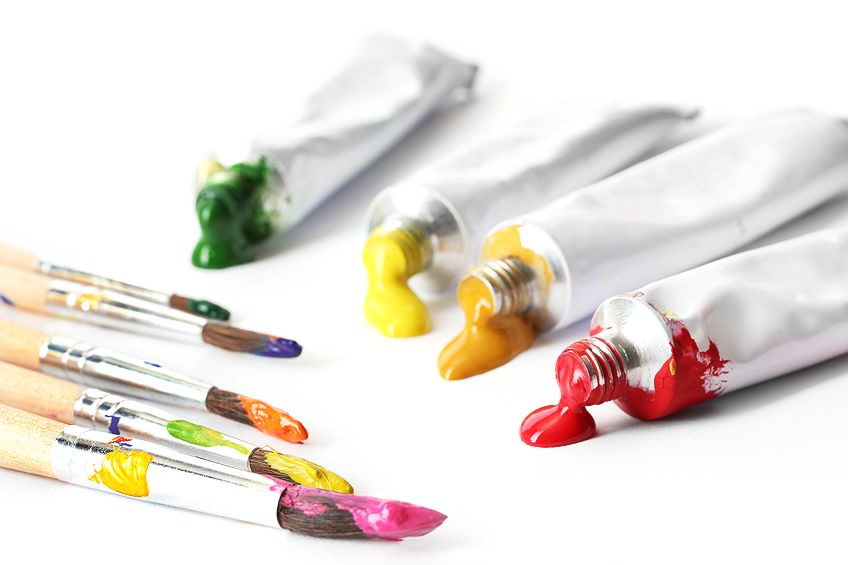
Soft-Bodied
This product is composed of a blend of acrylic paints that have a soft body and are designed to blend with a variety of pigments. It should still be possible to apply the paint smoothly to the surface after adding mediums because the viscosity of the paint will not be affected. This type of paint has acrylic ingredients that make it level itself when it dries, providing a smooth finish.
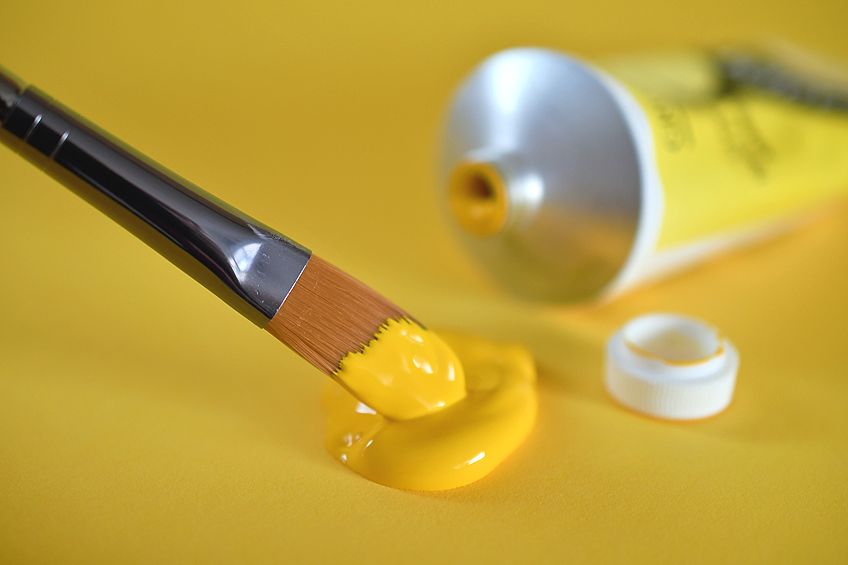
Heavy-Bodied
Having a buttery texture, these thick paints have a thick consistency that makes them suitable for use on rougher surfaces. In our opinion, this medium allows for peaks and brush strokes to remain in place, so it is useful if you are going to apply an impasto technique to the piece. Those who prefer the heavy body of these paints, similar to oil paints, but who prefer rapid drying times, find this to be very popular.
Liquid Acrylic Paints
A type of paint with this texture is normally referred to as double cream paint, as it is packaged in a bottle like double cream. This type of paint comes in vibrant colors and is a thin consistency. As a result, these types of acrylic paints are perfect for staining, spraying, and brushing, as well as being used for glazing or staining effects.
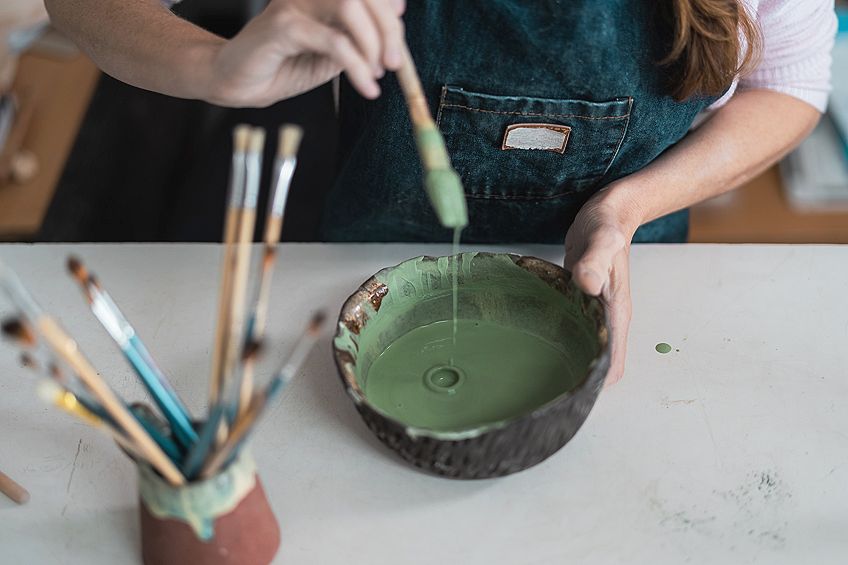
Acrylic-Based Inks
It contains very fine dye particles in a fluid consistency, which provides intense colors because of the fine pigments in the dye. With the use of either a paintbrush, an airbrush, or even a pen, this paint can be used on a variety of surfaces, it dries to a glossy finish, and has just the right consistency to fill pens and markers. The specially formulated airbrush paint will cause less clogging and is less likely to obstruct the way the paint is being applied.
Acrylic-Based Gouache
Gouache is another very popular paint, but the acrylic-based version is even more so. These paints will dry in an opaque finish, as well as a matte finish. Like the typical acrylic paint, once this paint has dried, it will not be made wet again.

Acrylic Interactive Paints
Interactive acrylic paints are the type that dry differently as they also have a very unique formula that allows the acrylic paint user to “unlock” the paint and help to slow down the still-wet acrylic paint. You will need to make use of a fast-medium fixer to help dry the paint when you are done.
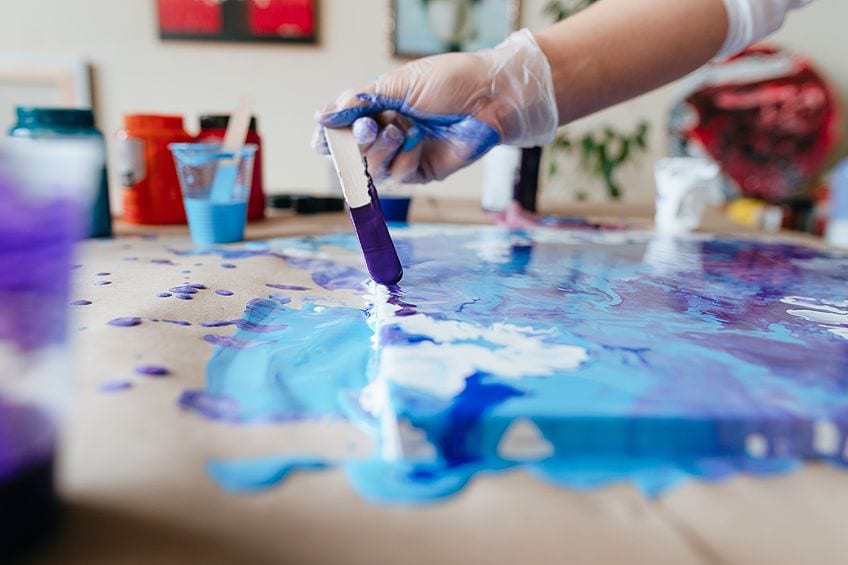
Open Acrylic Paints
Wet-on-wet techniques like wet-on-wet can be applied with these paints because they are designed to dry slower. In addition, it is great that it can be used to blend paint on canvas as well as paper when painting. When people are interested in applying oil painting techniques to their work, open acrylics are most suitable for them.
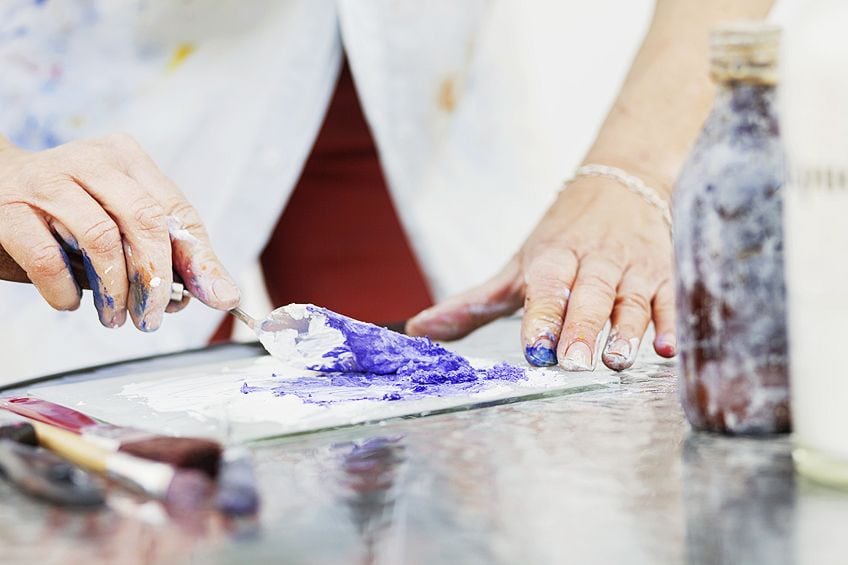
Sprays and Markers for Acrylic
There are quite a few acrylic pen markers available that will help you to make it as versatile and as easy as possible to use acrylic paints. These pens can be used both to paint and to draw while providing vibrant colors. Furthermore, they don’t only have the benefit of being waterproof, but over a wide range of surfaces. There are also acrylic spray paints, which can be used for applying thin layers of paint to pretty much any surface.
The Various Grades of Acrylic Paint
You can easily combine the various types of acrylics, for example, mix a soft body paint with hard body paint. This provides a lot of control over how you want to use acrylic paints, and the techniques and applications are vast. So, with the different types of paint, you also get different grades.
Professional Acrylic Paints
In professional acrylic paints, you will find top-quality ingredients and pigments. They do not have as much of the binder in the formula, but they do come with a wider variety of highly vibrant colors in comparison to the student-grade acrylic paints.
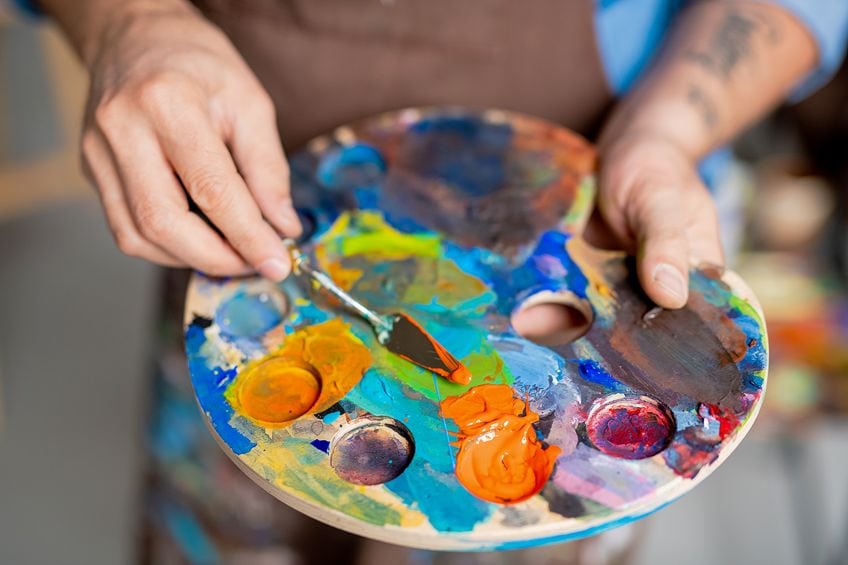
Artist Acrylic Paints
In general, the pigments present in acrylic paints for artists are similar to those in acrylics for professionals. To make them more affordable, more binder is added along with other ingredients that will improve the quality. There is a much smaller difference between professional and artist-grade paint in terms of color shifting, so the paint changes from a lighter shade to a darker shade much less than the paint that comes in your cheaper variety of paint.
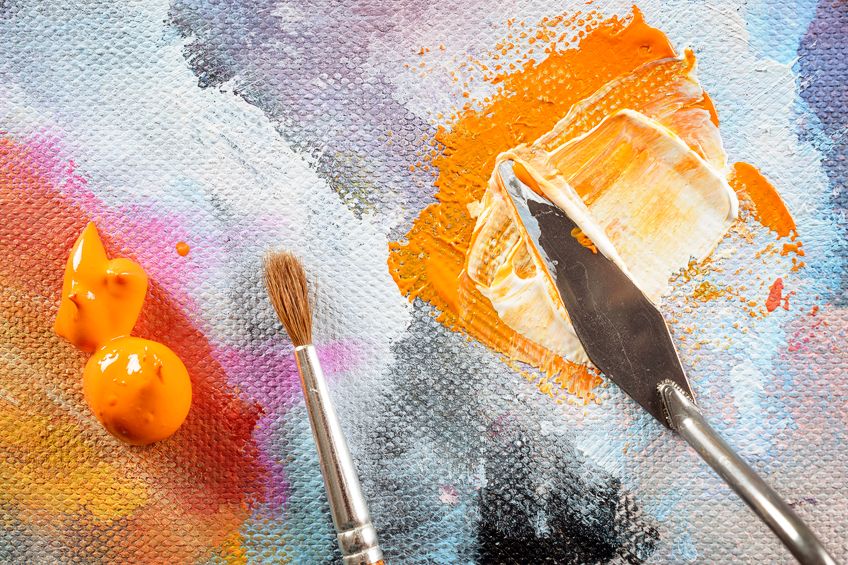
Student-grade Acrylic Paints
These are the perfect acrylic paints for the newbie to the world of painting. Typically, they have filling agents to bulk it up, and they have a lot more binder than professional acrylic paint has. This affects the brightness of the color and the opacity level. It is possible, for example, that some people find the paints they are currently using to be chalky due to the presence of the fillers in them. Nevertheless, this type of paint will prove to be a better option if you are on a budget and looking for an affordable option.
What to Look for When Buying Acrylic Paint
With all of the information, there is to learn about what acrylic paint is, and how to use it, it might seem daunting when it comes down to choosing the right product. For your benefit, we have made a table of the various acrylic paint features that you must bear in mind when you are looking for paint to buy.
| Attributes of Acrylic Paint | Detail |
| Viscosity | You must work out the type of paint for artwork requires, hard or soft-bodied |
| Lightfast ability | The manufacturer of every brand will include the level of lightfastness that you can read on the label |
| Quality or Grade of Paint | This depends on what your level of skill is and what you are looking for in the paint. |
| Color variety | When starting out you might want to start with a set with limited colors, and then work your way up with a higher variety as you become more skilled |
| Time to dry | Most acrylic paints will dry fast unless you use a pen acrylic paint product |
| Brand | Cost and quality play an important role in choosing brands. You should start with cheaper brands, and then slowly experiment with others
|
Basic Acrylic Color Guide
After choosing a brand, by selecting a set of paints with all the colors you need, or by deciding to use individual colors, you have the option of choosing between various sets of paints. You should think about adding some of these colors listed below if you have gone for the individual paints.
| Color Name | Shade of Color | Hex Number |
| Ivory Black | #231F20 | |
| Cadmium Red | #D22B2B | |
| Cadmium Orange | #ED872D | |
| Alizarin Crimson | #E32636 | |
| Cadmium Yellow | #FFF23E | |
| Phthalo Green | #123524 | |
| Phthalo Blue | #000F89 | |
| Burnt Sienna | #E97451 | |
| Dioxazine Purple | #5C3A93 | |
| Titanium White | #F3F4F7 |
How to Use Acrylic Paint
To have a breezy painting experience, make sure that you have all the tools and materials you need to start the process and finish without a pause. Acrylic painting supplies are a few essential items like paints and brushes, but you can also buy some extra accessories such as the easel and the easel stand.
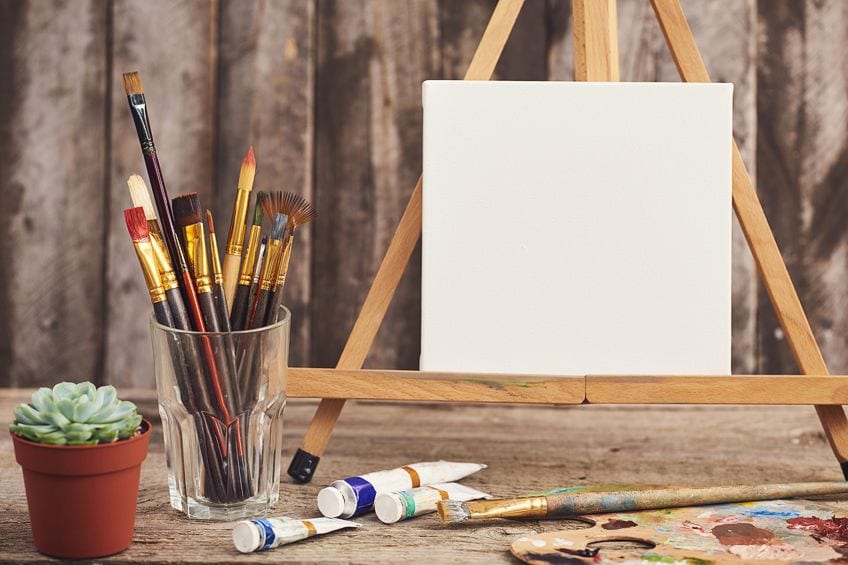
Essential Supplies
- Surface to paint on like a canvas
- Soap and water for cleaning
- A cleaning cloth or paper towels
- Paintbrushes for acrylic paint
- Palette
- Your choice of acrylic paint
Extra Supplies
- Painter’s tape, or masking tape
- Painter’s apron or smock
- Varnish for external coat
- Graphite pencil
- Palette knife
- Sponge
- Toothpicks
- Gesso
- Easel
Using Gesso
In this guide, we will assume that you are going to paint your acrylic paints on a canvas. These days you can purchase a canvas that has gesso applied over its surface already, but in the past, you had to add the gesso yourself. The point of Gesso is to ensure the paint adheres to the surface and does not bleed through to the back of the canvas.
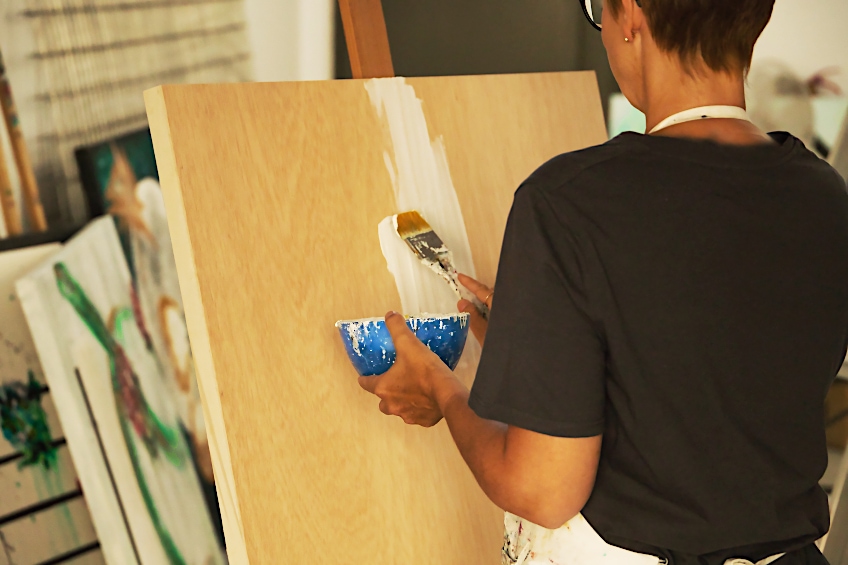
It will be easier to apply the gesso if you first take your graphite pencil and layout your image or design. If you would like to prevent the pencil lines from smudging, you can then apply a thin layer of gesso over the pencil lines. Using acrylics on wood, plastic, or any other surface can also be achieved by using gesso or a primer.
Underpainting
The purpose of underpainting is to showcase the depth of the artwork by adding the highlights and shadows in various layers and a certain order. Luckily acrylic paint is great for this method because of how fast each layer takes to dry, you will not have much time to wait.
The color of the ink should be light enough that you can see the drawing well, but not so dark that it would cover the drawing. The paint needs to be allowed to dry for a while before you can add any additional layers.
Painting With Colors
After your underpainting process, you can begin to add more colors. These colors can be matched with the tones of the shadows that you added in the previous step. Make sure that you have filled your whole artwork’s surface with the colors because a full painting is more aesthetic than one that is half-filled. The latter is blander.

The colors must be added in an order of light to dark shades, and the paint you use should all be of the same quality, if not the same brand.
Detailing Your Painting
It is best to start with the large shapes and work your way down to the details, before adding color and then highlighting. To learn the art of painting, it is important to always try again if things do not go according to plan. If you take some art classes, you will eventually become comfortable with painting. It’s not about getting rich, it’s about having fun, so go ahead and persevere and enjoy the process.
Once the painting is complete, you can protect and secure its longevity and lightfastness by applying a layer of varnish. Use one of the good quality artist’s varnishes available.
Making Your Own Acrylic Paint
This is the part where you learn how to make your acrylic paint. This skill is underrated because the paints are so readily available in stores, but it will help your budget in the long run. Here is how you do it:
- Mix your pigment with water or clear alcohol, then grind it until it’s mixed in well, but if you add too much water or alcohol, you’ll dilute the bond too much
- Then you add your binder – Liquitex matte medium is a good example. Alternatively, you can go for a glossy medium
- and make sure you keep to the instructions on the acrylic binder
- If the acrylic dries too fast, add a retarder.
- Keep the paint in an airtight container
- Alternatively, you can combine equal amounts of white glue and liquid paint to make an imitation acrylic paint
Suggestions for Acrylic Painting
You might think we have covered everything you might need to know, plus some more in this tutorial, but there is a lot more we could add. We have, however, added in a summarized version of our top suggestions for making your acrylic painting experience fun and simple.
- Spray a misting bottle of water over your artwork will prevent the paints from prematurely drying
- Wider strokes can be achieved with abstract expression paintbrushes
- Use a palette knife to get great impasto effects
- Use an acrylic thinning medium as opposed to water when thinning your acrylic paint to keep the quality up
- Add different mediums to manipulate the effect of the finish
- Oil paint can not be painted with acrylic paint because one is water-based and the other is oil-based.
- Use a color example swatch so that you know what the color will look like when it has dried, usually, they go a darker color
- Cover your palette with some plastic wrap so that you can leave it without the paint drying out
- Keep a few fresh cups of water nearby so you do not have to change the water as often
- Make sure that your brushes are sufficiently cleaned when you are finished painting to save the bristle quality
Now that you are fully informed on what acrylic paint is, and how to make acrylic paint from all of the ingredients including the acrylic binder, you can start to use the paints knowing exactly what is in the formula. This will help you know what to mix with your paints for the various effects and techniques.
Frequently Asked Questions
What Does Acrylic Paint Do?
A large percentage of artists and professional grade paints are acrylics, and this is often used in contemporary painting. There are many types of acrylic paints. Additionally, you can also get cheaper acrylic paints, which are perfect for certain crafts because they can be used on a variety of surfaces, including metal, wood, fabrics, glass, clay, and canvas.
Can You Varnish an Acrylic Painting?
A varnish can be applied to an acrylic painting, but it must be given a month or more to dry properly. It does take a while for acrylic paint to completely cure, even though it dries very fast.
Can Acrylics be Washed Off?
Water-repellent and permanent, these paints dry quickly. Not only that, but they will not fade in color vitality, nor will the artwork go yellow after a while because it is lightfast. You can wash acrylic paint before it has dried, but once it has, it is there to stay unless you use a solvent paint remover.
How Safe is Acrylic Paint?
You don’t have to use toxic solvents to clean acrylic paint since it’s water-based. You can also work in confined spaces without having to worry about breathing toxic fumes. However, be careful with pigments and acrylic mediums.
Larissa Meyer is a 32-year-old mother from Michigan and creative spirit since childhood. Her passion for painting and drawing has led her to an education as an illustrator and a career as a freelance graphic designer. She has a Bachelor of Fine Arts in Illustration and a degree in Graphic Design. Larissa is a talented artist who is able to master a wide range of styles and techniques to bring her artistic vision to life. Her greatest passion is currently fluid painting and epoxy resin art. Larissa’s love for art and her knowledge and experience in illustration make her the perfect Creative Director for our fluid-painting.com team. She is the creative head of our team and shares her passion and knowledge with our community through articles and tutorials.
As a mother of a 2-year-old daughter, Larissa also understands the importance of fostering creativity in early childhood. She uses her experience and knowledge to help other parents inspire their children and develop their artistic skills as well.
Learn more about Larissa Meyer and about us.




